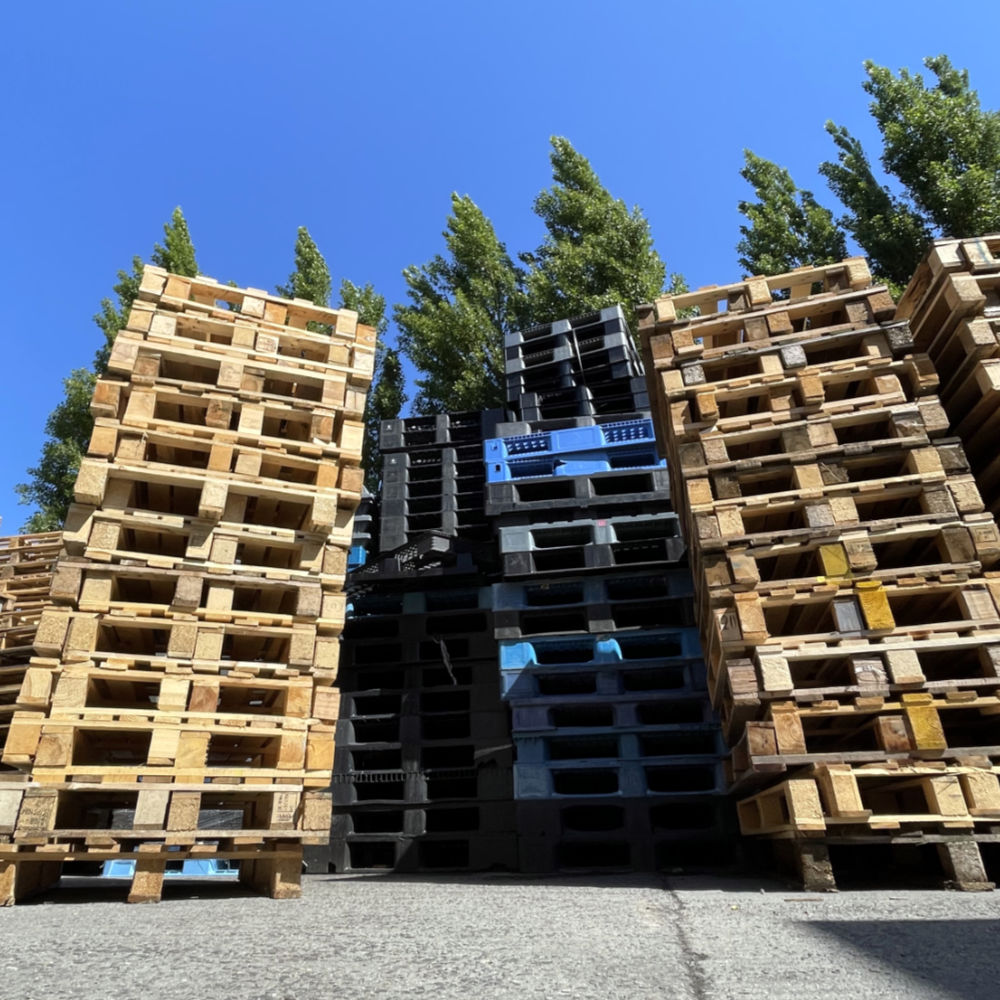Wooden vs. Plastic Pallets: What’s best for your business and the planet?
In the logistics world, the humble pallet is the unsung hero of global commerce. But when it comes to choosing between wooden vs. plastic pallets, which option should your business select? A recent environmental impact assessment offers fascinating insights that might surprise you.
The carbon question
When we talk sustainability, carbon footprint matters. Wooden pallets shine in this category, producing just 4-10 kg of CO₂ equivalent per pallet. Even more impressive? When accounting for carbon sequestration, wooden pallets can actually achieve negative emissions (up to -26 kg CO₂-eq), effectively acting as carbon sinks.
Plastic pallets tell a different story. Virgin plastic pallets generate between 22-166 kg CO₂-eq – potentially up to 40 times the carbon impact of their wooden counterparts! Even recycled plastic pallets produce approximately 4 kg CO₂-eq, which is comparable to wooden pallets without the benefit of carbon sequestration.
Energy efficiency
The energy gap is even more dramatic. Manufacturing wooden pallets requires just 0.69 kWh per square meter on average, while plastic pallets demand a staggering 104 kWh – roughly 150 times more energy! This difference stems from the energy-intensive processes required for melting and molding plastics.
The durability debate
Plastic pallets do come with advantages. They typically last longer – up to 10 times the lifespan of wooden options – and require less maintenance. They also don’t need phytosanitary treatments like heat treatment or fumigation, giving them an edge for international shipping compliance.

End-of-life considerations
What happens when your pallets reach the end of their useful life? Wooden pallets offer multiple environmentally friendly options: they can be recycled into new products, used for energy recovery, or allowed to biodegrade naturally. Plastic pallets present more challenges with limited recycling options and potential environmental persistence issues.
Wooden vs. Plastic Pallets and making the right choice
The assessment makes clear that while plastic pallets offer advantages in durability and hygiene requirements, wooden pallets generally present a lower environmental impact – particularly regarding carbon footprint and energy consumption.
Your optimal choice depends on several factors:
- How long do you need your pallets to last?
- Are you shipping internationally?
- What end-of-life management options are available in your area?
- How important is minimising carbon footprint to your sustainability goals?
This research shows that sustainable sourcing and proper end-of-life management are key to maximising the environmental benefits of wooden pallets. Meanwhile, advances in recycled plastic technology continue to reduce the environmental impact of plastic options.
What’s your experience with different pallet types? Have you considered the environmental impact of your logistics choices? We’d love to hear your thoughts in the comments below!

